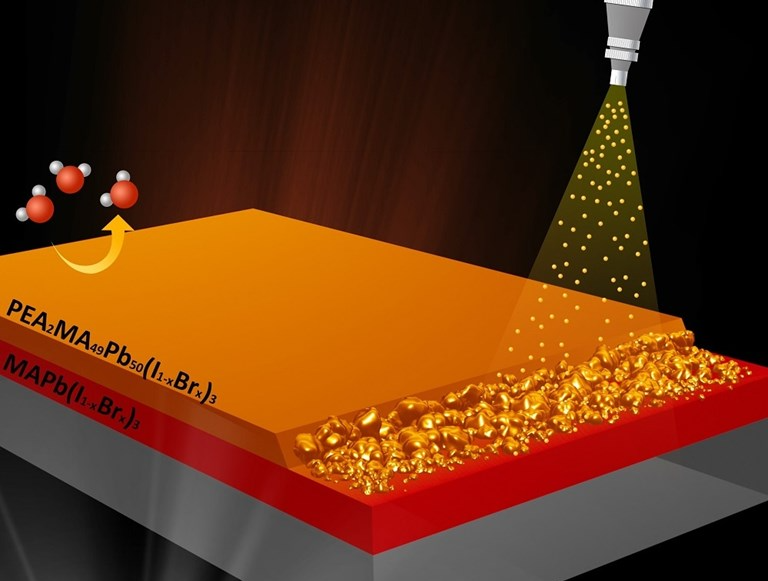Jun 4 2020
Perovskites are a potential alternative to the silicon used for making a majority of the present-day solar cells. But despite this fact, novel manufacturing processes are required to make them viable for commercial production.
 Researchers have developed a new precision spray-coating method called sequential spray deposition that enables multilayer perovskite absorber for advanced solar cell designs and could be scaled up for mass production. The technique could be used to create perovskite architectures with any number of layers. Image Credit: Pongsakorn Kanjanaboos, Mahidol University.
Researchers have developed a new precision spray-coating method called sequential spray deposition that enables multilayer perovskite absorber for advanced solar cell designs and could be scaled up for mass production. The technique could be used to create perovskite architectures with any number of layers. Image Credit: Pongsakorn Kanjanaboos, Mahidol University.
To fill this gap, scientists have designed a new precision spray-coating technique that allows more intricate perovskite solar cell designs and can possibly be upgraded for large-scale production.
Perovskites show promise for next-generation solar cells since they are capable of absorbing light and converting it to energy with improved efficiency and potentially reduce the manufacturing costs when compared to silicon. Moreover, perovskites can be applied to glass to produce energy-producing windows.
Our work demonstrates a process to deposit perovskite layer by layer with controllable thicknesses and rates of deposition for each layer. This new method enables stacked designs for solar cells with better performance and stability.
Pongsakorn Kanjanaboos, Research Team Leader, School of Materials Science and Innovation, Faculty of Science, Mahidol University
Kanjanaboos together with his collaborators has explained the new spray coating technique, known as sequential spray deposition, in Optical Materials Express—the Optical Society (OSA) journal—demonstrating how it can be used for creating a multilayer perovskite design.
By applying different types of perovskite materials in every layer, researchers can customize the function of a device or fulfill the particular stability and performance.
A Better Way to Spray
The perovskites have the advantage of being solution-processable, which means a solar cell can be created by drying liquid perovskite into a solid at low temperatures. This kind of fabrication process is relatively simpler and less costly than creating a conventional silicon solar cell—a process that needs extremely high temperatures and involves cutting a solid material into wafers.
But the solution process generally used for producing perovskites does not enable the multilayer designs, since the upper layer is likely to dissolve the lower layer that has already dried up. To overcome this difficulty, the scientists turned to a process called sequential spray deposition in which a surface is applied with small droplets of the material.
After experimenting with different types of spray coating techniques, the researchers identified the one that worked at temperatures of about 100 °C. They subsequently improved the spray parameters to make sure that the small droplets dried and crystallized into solid perovskite instantly upon making contact with the already-dried lower layer.
Building a Multi-Layer Device
With our spray coating process, the solution of the upper layer doesn’t disturb the solid film making up the first layer. Endless combinations of stacked perovskite architectures with any number of layers can be designed and created with precise control of thicknesses and rates of deposition for each layer.
Pongsakorn Kanjanaboos, Research Team Leader, School of Materials Science and Innovation, Faculty of Science, Mahidol University
The scientists illustrated the method by depositing a highly stable perovskite material on various perovskite materials that have more improved electrical properties. This semi-transparent, double-layer perovskite device exhibited the well-defined layers while achieving excellent stability and high performance at the same time.
The scientists have now planned to apply the new method to create multilayer perovskite devices with novel functions and combinations of stability and performance that were impossible before.
Journal Reference:
Amratisha, K., et al. (2020) Layer-by-layer spray coating of a stacked perovskite absorber for perovskite solar cells with better performance and stability under a humid environment. Optical Materials Express. doi.org/10.1364/OME.391546.
Source: https://www.osa.org/